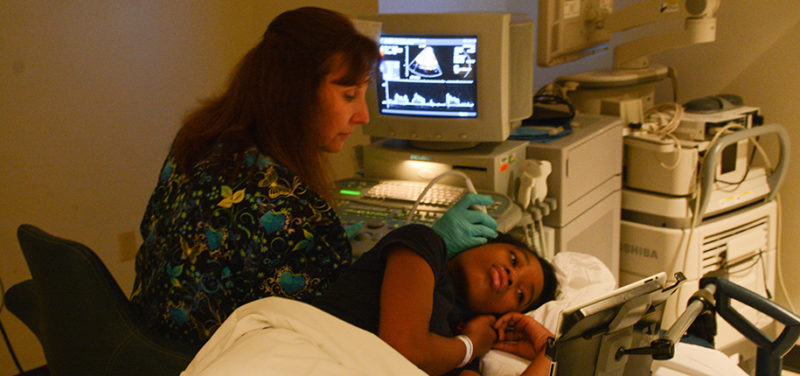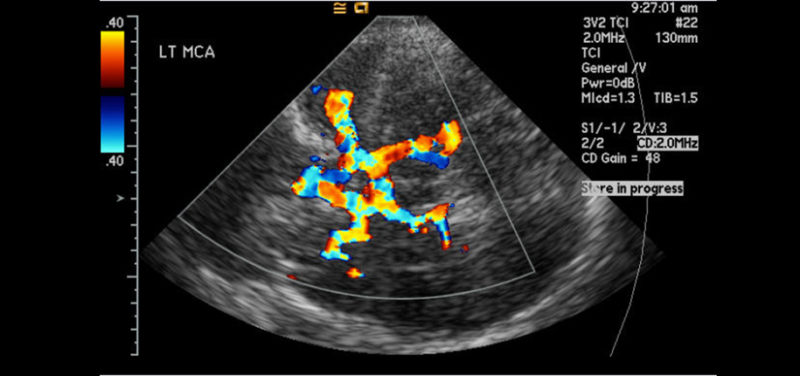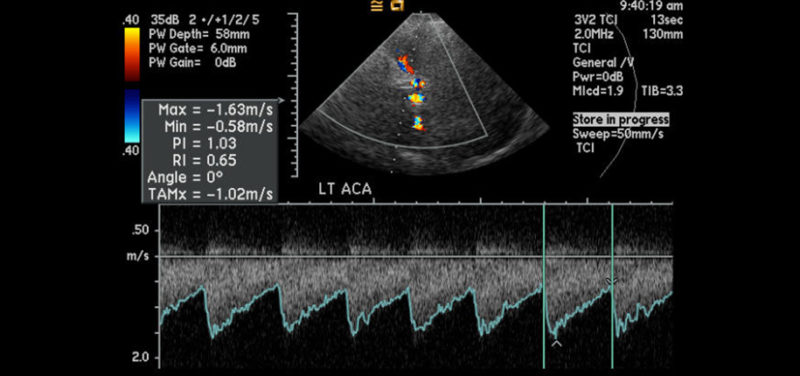
Stroke is a serious complication in patients with sickle cell disease. Here in the Cincinnati Children’s Radiology Department, we perform transcranial Doppler (TCD) ultrasound exams to check for increased risk of stroke in these patients.
The TCD exam is similar to other ultrasound tests. The transducer, or camera, is very small and placed on the side of your child’s head just in front of the ear. This test is painless and requires no special preparation on the day of the test.
The TCD method was first introduced by Dr. Rune Aaslid from Norway in 1982. He discovered that you could send an ultrasound beam through the thin temporal bone of the skull and measure the speed or velocity of the blood as it traveled through the vessels. This TCD ultrasound test examines the velocity in the arteries of the Circle of Willis–some of the major blood vessels that supply the brain. If the velocity in an artery exceeds 250 centimeters per second, that area is at a higher risk for stroke. Blood transfusions and/or medications are commonly used to treat these patients with high velocity results.

It is crucially important that patients undergoing a TCD exam do not sleep or cry. When you go to sleep, you relax and your respirations decrease. Your body responds by increasing the velocity of the blood going to your brain to ensure an adequate supply of oxygen. This would give you a false positive result on a TCD study. On the other hand, when a patient is crying, their respirations increase. Your body responds to this by decreasing the velocity of the blood going to the brain, preventing too much oxygen from being delivered. This situation could give you a false negative result on a TCD exam.

Our patients are kept alert and comfortable for optimal accurate measurements. Child Life specialists assist in comforting and entertaining our young patients, and iPads aid in keeping our older patients awake and attentive.
Our patients with sickle cell disease are screened regularly with this exam. Keeping a close eye on their arterial velocities allows our physicians to intervene early, decreasing your child’s risk for stroke. This TCD exam is just another way that we at Cincinnati Children’s can change the outcome together.